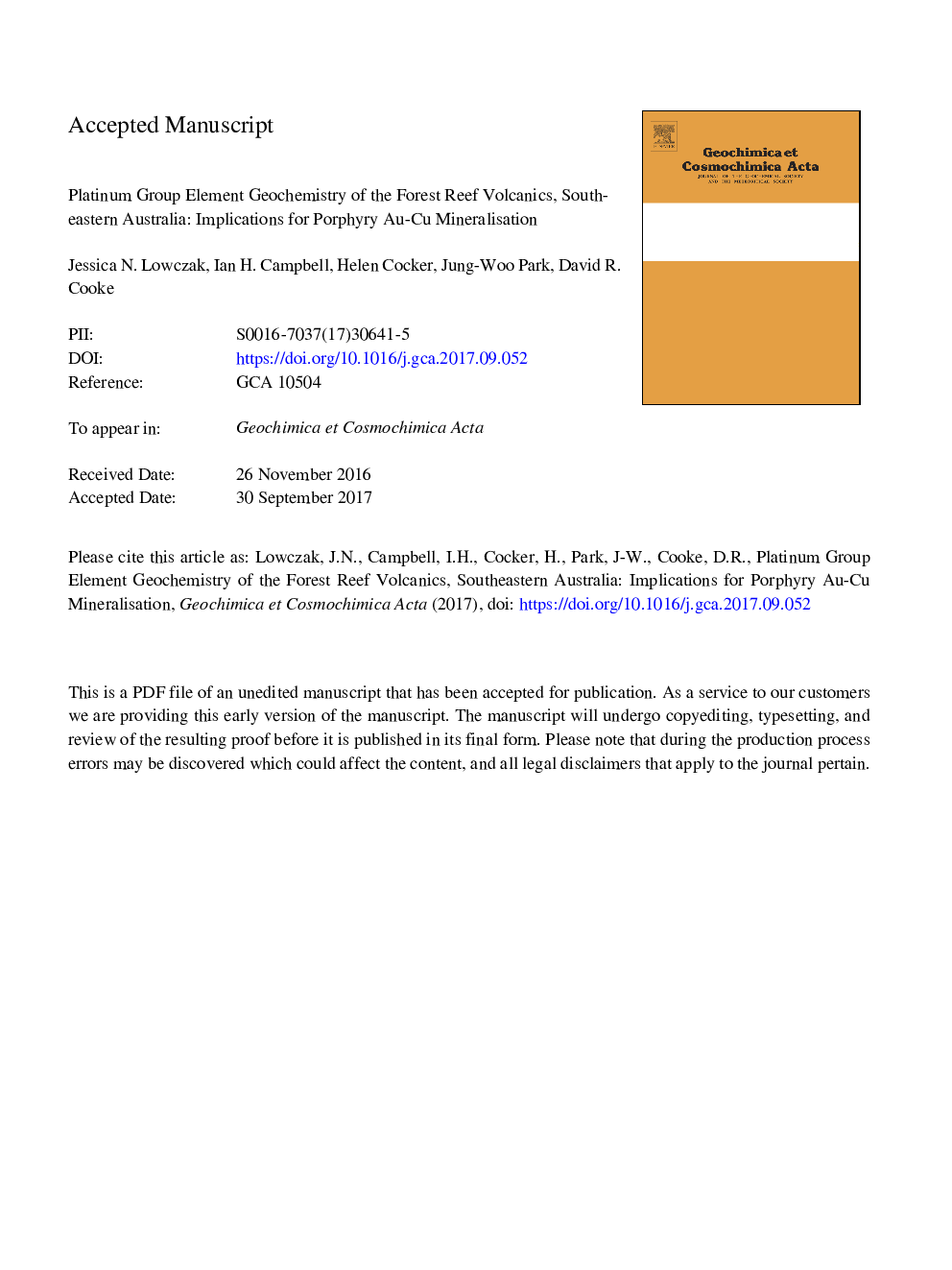| Article ID | Journal | Published Year | Pages | File Type |
|---|---|---|---|---|
| 8911031 | Geochimica et Cosmochimica Acta | 2018 | 49 Pages |
Abstract
The Forest Reef Volcanics can be subdivided, on the basis of their contrasting PGE geochemistry, into high-Mg (>6.8 wt.% MgO) and low-Mg suites (â¤6.8 wt.% MgO). Platinum, Pd and Re concentrations increase in the high-Mg samples, whereas Ir and Ru decrease and Rh concentrations remain steady, with decreasing MgO. The coupled Ir, Ru and Rh depletion is attributed to the partitioning of these elements into magnetite. The rate of Pt and Pd enrichment is not possible by closed-system fractional crystallisation alone, which suggests that the parent magma was replenished by a Pt-Pd-rich melt. In contrast, the PGE concentrations in the low-Mg samples decrease with decreasing MgO indicating the onset of sulfide saturation at 6.8 wt.% MgO, which is confirmed by the presence of spheroidal sulfide inclusions in liquidus crystals (i.e. clinopyroxene, plagioclase, magnetite). The rate of Pd depletion is appreciably less than for any other sulfide saturated felsic system for which data are available. This requires either that the amount of sulfide melt to have precipitated was unusually low, or that the rate of Pd depletion was limited by the mass of silicate melt the sulfide melt reached equilibrium with, or both. In any event, the fraction of sulfide melt that precipitated was too small to have had a significant effect on the Cu and Au content of the magma so that both Cu and Au were available to enter the ore-forming fluid when the magma became volatile saturated at, or shortly after, it reached ca. 2.9 wt.% MgO.
Related Topics
Physical Sciences and Engineering
Earth and Planetary Sciences
Geochemistry and Petrology
Authors
Jessica N. Lowczak, Ian H. Campbell, Helen Cocker, Jung-Woo Park, David R. Cooke,
